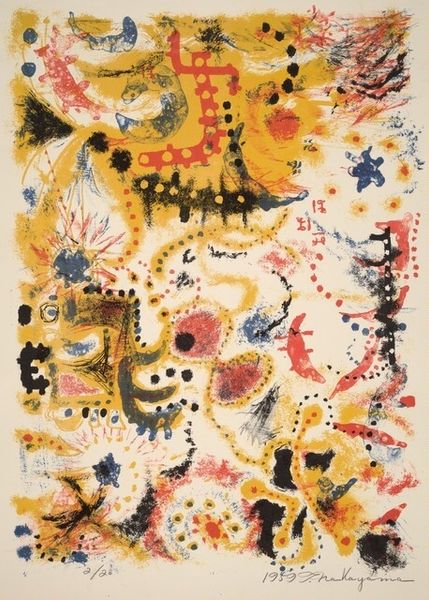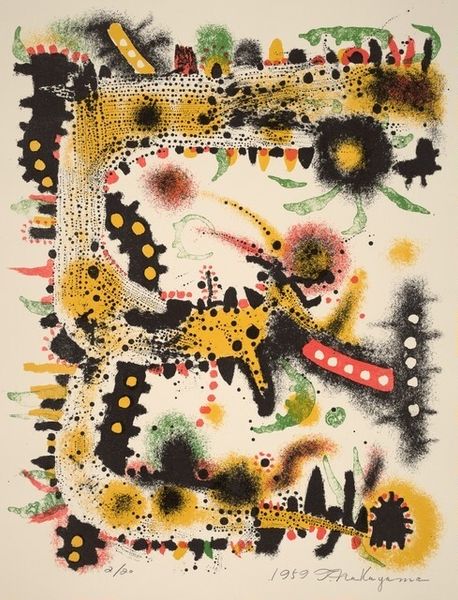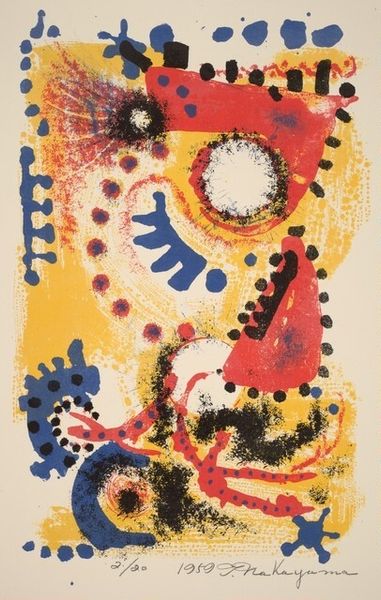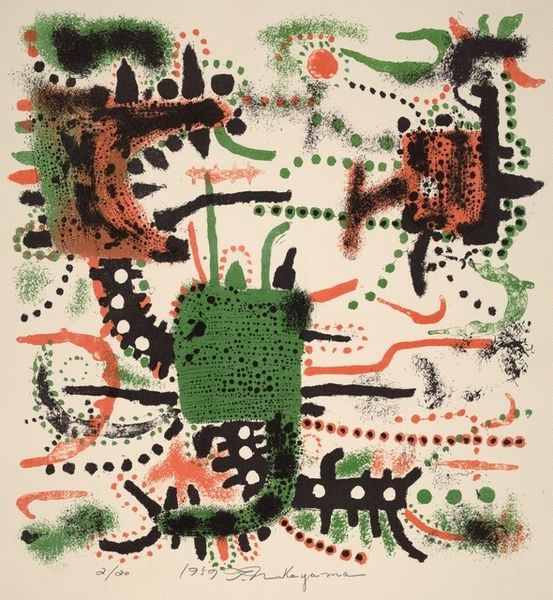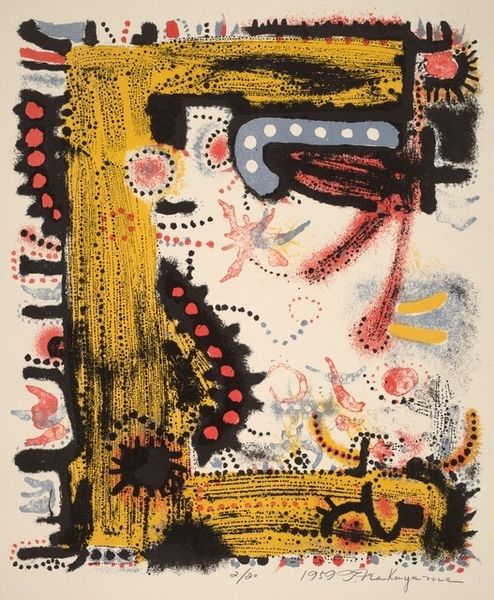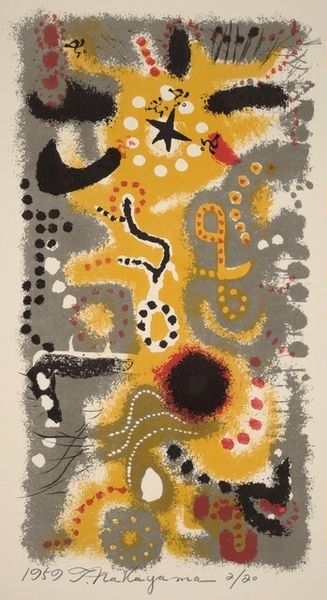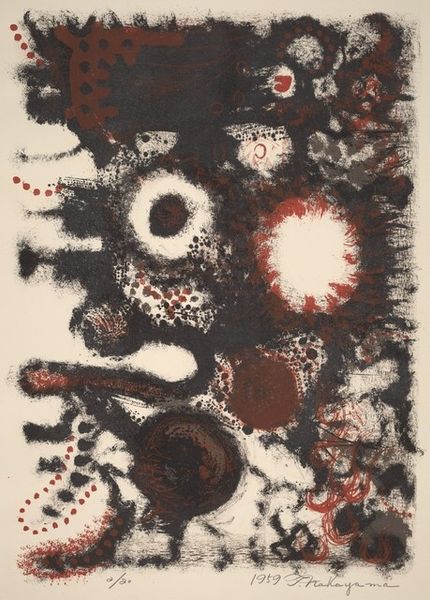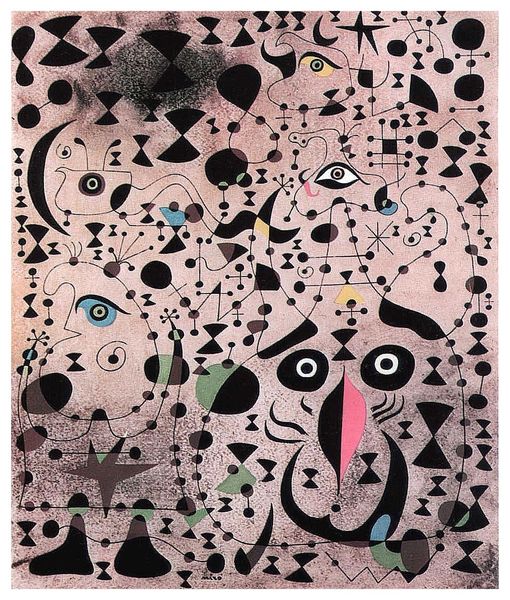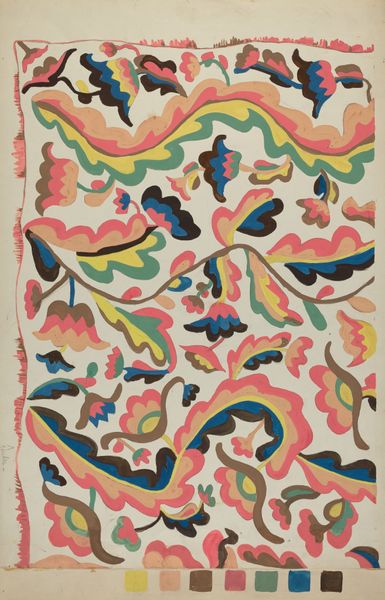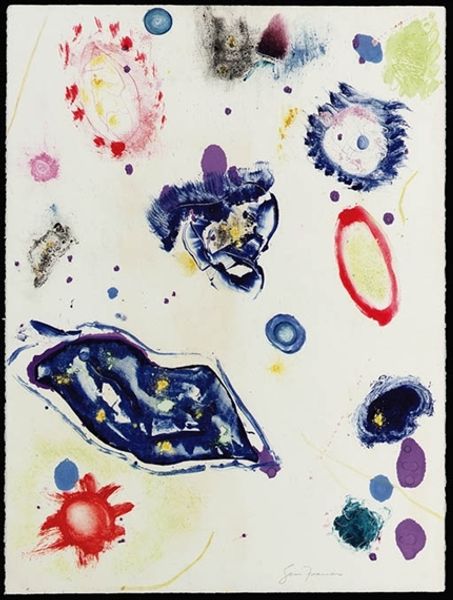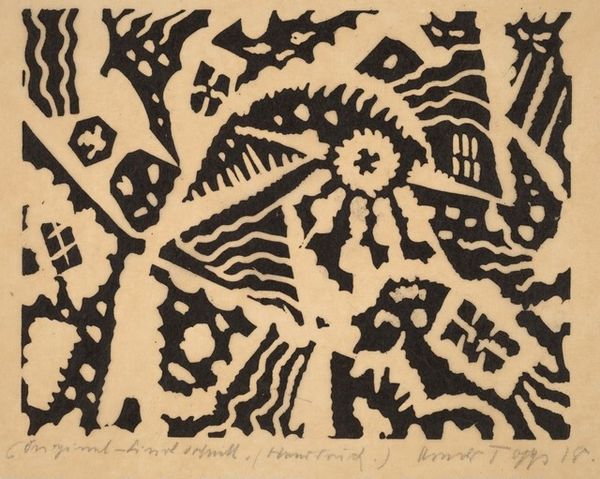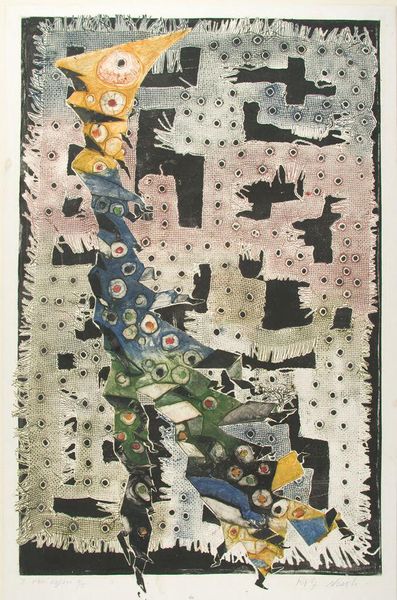
graphic-art, print
#
abstract-expressionism
#
graphic-art
# print
#
geometric
#
abstraction
Copyright: National Gallery of Art: CC0 1.0
Curator: Tadashi Nakayama created "Rappa-Shu (Trumpeter) IV" in 1959. It's a print that pulses with a unique energy. What strikes you most about it? Editor: It’s wonderfully chaotic, almost like a visual score waiting to be performed. The textures created by the printmaking process give the simple shapes an incredible depth. There's also a subtle palette with blacks, tans, and red hues playing together in an amazing pattern. Curator: Absolutely. Nakayama was working within the abstract expressionist movement, a time of profound shifts in artistic expression post-World War II. We see him embracing abstraction to convey raw emotion. Editor: Emotion is a good way to define this art. This emotionality stems in part from the arrangement of its graphic components, geometric shapes seemingly suspended in this flattened space. There’s also the interplay between solid forms and scattered, staccato dots that generates a great level of activity and, indeed, expressiveness. Curator: What I find fascinating is how Nakayama combines traditional Japanese aesthetics with Western abstract tendencies. The title hints at something celebratory, even militaristic perhaps. "Trumpeter" could symbolize a call to action, a declaration of artistic independence. Editor: Possibly, or perhaps it represents the artist, sounding their own visual trumpet, declaring their artistic stance. Look at the black ink. The heavy use of black ink makes the piece seem substantial, assertive. Then the splashes of rust colored ink, what about their significance? Are they perhaps symbols of lost Japanese ancestral pride, in a Japan undergoing rapid westernization and reconstruction? Curator: That’s a very interesting reading. And that brings us back to this question of reception and its complicated politics during the period of rapid change when this was done. Nakayama’s choices reflect not just individual expression but a cultural negotiation. It is a powerful dialogue between the local and global forces. Editor: Looking at the whole structure from a formal perspective helps us realize what a magnificent construction it truly is! Curator: Indeed! The ability of such a construction to engage and stir such interpretations confirms, for me, the social role of the artwork and the genius of the artist!
Comments
No comments
Be the first to comment and join the conversation on the ultimate creative platform.
